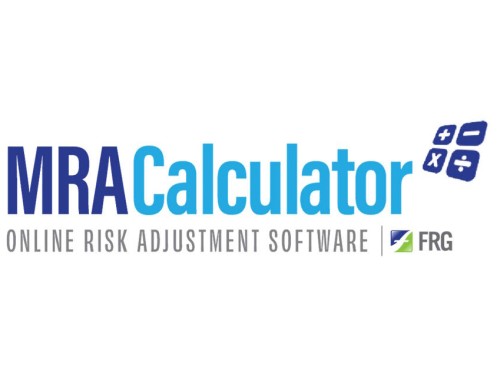Understanding the latest Centers for Medicare & Medicaid Services model and recent healthcare trends gives experts a broad outlook on the future of Value Based Care.
In July of this year, the Centers for Medicare & Medicaid Services (CMS) launched the Making Care Primary (MCP) Model to help small, independent, and rural primary care organizations within eight states enter value-based care (VBC) arrangements.
According to Liz Fowler, the Deputy Administrator and Center for Medicare and Medicaid Innovation Director for CMS, this new model is an investment in the nation’s primary care network and helps “bring us closer to our goal of reaching 100% of Traditional Medicare beneficiaries and the vast majority of Medicaid beneficiaries in accountable care arrangements, including advanced primary care, by 2030.”
While CMS has pushed new healthcare models to make VBC more accessible and Medicare Advantage (MA) fraud less common, the growing privatization of MA has led to many healthcare professionals worried about a future when systems are driven by profits rather than patient outcomes.
In this article, we further explore how the Making Care Primary Model, along with other healthcare trends, will influence the trajectory of American healthcare for the rest of the decade.
What’s the Goal of the Making Care Primary Model?
An article by Fierce Healthcare states that the latest MCP Model aims “to improve care for patients by expanding and enhancing care management and care coordination, equipping primary care clinicians with tools to form partnerships with health care specialists, and leveraging community-based connections to address patients’ health needs as well as their health-related social needs.”
CMS plans for this model to last 10.5 years, from July 2024 to the end of Dec 2034. As many small, independent, and rural healthcare organizations currently have a harder time entering value-based care arrangements, the continuous success of programs like the MCP Model some experts say will have a major impact on the growth of VBC in the 2020s.
But not everyone is so optimistic about this MCP Model.
National Concerns and Potential Exclusions
Representatives of the National Association of ACOs (NAACOS) have voiced concern that the MCP Model excludes practices that are part of an Accountable Care Organization (ACO), which forces practices to choose between MCP or participating in an ACO.
David Pittman, Director of Communications and Regulatory Affairs for NAACOS, wrote in a press release that CMS needs to allow concurrent participation and include a population-based payment option for ACOs.
Right now, MCP uses a three-track approach with enhanced payments for participants who use value-based care and alternative payment models:
- Track One focuses on building infrastructure to support care transformation. Participants will develop the foundation for implementing advanced primary care services. According to CMS, payment for primary care will remain fee-for-service (FFS), while CMS also provides additional financial support to help participants develop their care infrastructure and build advanced care delivery capabilities.
- Track Two focuses on implementing advanced primary care. Payment for primary care shifted to a 50/50 blend of prospective, population-based payments, and FFS payments. CMS will continue to provide additional financial support at a lower level than Track 1. Participants will be able to earn increased financial rewards for improving patient health outcomes.
- Track Three includes advance payments with bonuses based on participant performance. Payment for primary care is fully prospective, while CMS will continue to provide financial support at a lower level than track two. Like track two, participants can earn greater financial rewards for improving patient health outcomes.
For more information about the model, model track options, and eligibility criteria, check out this model summary provided by CMS.
The Consequences of the Growing Privatization of Medicare
As the benefits and drawbacks of CMS’s new MCP Model are debated, healthcare professionals also leverage the potential consequences of the growing privatization of Medicare.
In 2023, the New York Times published an article by Reed Abelson which explained why many corporate giants, like CVS Health and Amazon, are buying primary care practices.
As primary care doctors oversee many patients, they bring business and steady profits to the healthcare organizations they partner with. Additionally, due to the rapid growth of MA enrollment during the last ten years and intentional upcoding, the federal government is now paying private insurers under the Medicare Advantage Program $400 billion a year. This is a financially appealing situation for giant companies like Amazon with an eye for expansion into the healthcare sector.
While these companies may claim their new healthcare arrangements will bring better care for patients, some healthcare professionals warn that the consolidation of healthcare will lead to a quest for profitable healthcare practices rather than patient focused, value based care.
Reed Abelson states, “…the absorption of doctor practices is part of a vast, accelerating consolidation of medical care, leaving patients in the hands of a shrinking number of giant companies or hospital groups. Nearly seven of 10 of all doctors are either employed by a hospital or a corporation, according to a recent analysis from the Physicians Advocacy Institute.”
With the change of management comes a loss of autonomy for physicians. When large healthcare organizations prioritize added services and extra diagnosis codes, physicians are overworked and expected to trade value for volume.
The Future of Medicare
It’s unclear exactly how much the privatization of Medicare will shape healthcare by the end of the decade. Former policy researcher and professor, Richard Kronick, estimated in a recent analysis of MA billing data that more than $106 billion dollars of overpayment was distributed to private health plans between 2010 to 2019.
During the last few years, there’s been a resurgence of article coverage about upcoding and how much intentional patient misdiagnosis may cost in the future. While the Biden administration has worked with CMS to further prevent upcoding, their adoption and rebranding of Direct Contracting Entities, now known as ACO Reach, troubles healthcare experts who see the potential for these programs to further jeopardize funding for Medicare.
What’s Next for Value Based Care?
As the pandemic taught us, the exact state of healthcare can change rapidly. There is no talisman to predict the success of programs like Making Care Primary or the exact consequences of privatizing Medicare.
Nevertheless, Medicare Advantage continues to attract many new patients every year, and there’s been continued effort and public pressure to make healthcare more affordable, efficient, and accessible.
Several trends following COVID-19, including telehealth practice, innovative wearable technology, and at-home diagnostic testing options, have led to the advancement of Value Based Care. Innovations like these, in both technology and data analytics, are expected to define the rest of the decade and create new opportunities for providers to treat patients more effectively.
Regarding the MCA Model, CMS claims to have all Medicare beneficiaries, and most Medicaid beneficiaries enrolled in accountable care programs by 2030. New research into how these programs truly impact patients, providers, and the American healthcare system will be needed to determine their success along the way.
FRG provides data distribution services for health plans that write risk contracts with primary care providers, and we provide data aggregation services to provider groups who accept risk across multiple carriers. If you would like any additional information about our services and their impact on value-based care, contact FRG by emailing info@frgsystems.com or calling 888-466-1025.







Leave A Comment